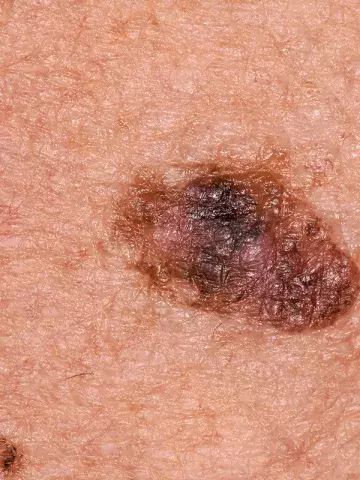Melanoma in situ: reassuring prognostic information
By Melanie Hinze
Patients with melanoma in situ have an increased but low risk of melanoma-specific mortality, an Australian expert told Medicine Today while commenting on a recent cohort study.
Professor Anne Cust, Deputy Director of the Daffodil Centre, Sydney, and Professor of Cancer Epidemiology in the Faculty of Medicine and Health at the University of Sydney, said factors associated with higher risk of death following melanoma in situ included older age (over 80 years), acral lentiginous melanoma subtype and the development of a subsequent primary invasive melanoma.
Published in JAMA Dermatology, the US population-based cohort study included 137,872 adults (46.4% women) with a diagnosis of first primary melanoma in situ from 2000 to 2018. The participants’ mean age at diagnosis was 61.9 years, and they were followed up for a mean of 6.6 years.
The 15-year melanoma-specific survival was 98.4%, whereas the 15-year relative survival was 112.4%. The study authors explained that patients with a diagnosis of melanoma in situ had an increased but low risk of melanoma-specific mortality and lived longer than people in the general population, suggesting significant detection among health-seeking individuals.
The authors found that risk of melanoma-specific mortality was higher for older patients (7.4% for those 80 years or older versus 1.4% for those aged 60 to 69 years), and for those with acral lentiginous melanoma (3.3% compared with 0.9% for those with superficial spreading melanoma). Among patients with primary melanoma in situ, 4.3% developed a second primary invasive melanoma and 7.4% experienced a second primary melanoma in situ during the study timeframe.
Professor Cust, also a faculty member of the Melanoma Institute Australia, Sydney, said patients who carried these risk factors might benefit from closer follow up after diagnosis.
She said, however, that it was important to communicate prognostic information regarding melanoma in situ to patients, as the overall prognosis was excellent but this diagnosis has been shown to carry a fear of cancer recurrence similar to that of a diagnosis of invasive melanoma.
‘Educating patients about the difference between melanoma in situ and invasive melanoma may alleviate this fear,’ she said.
This may also help patients at lower risk of developing another melanoma, or at lower risk of melanoma mortality, to accept less intensive surveillance, she added.


